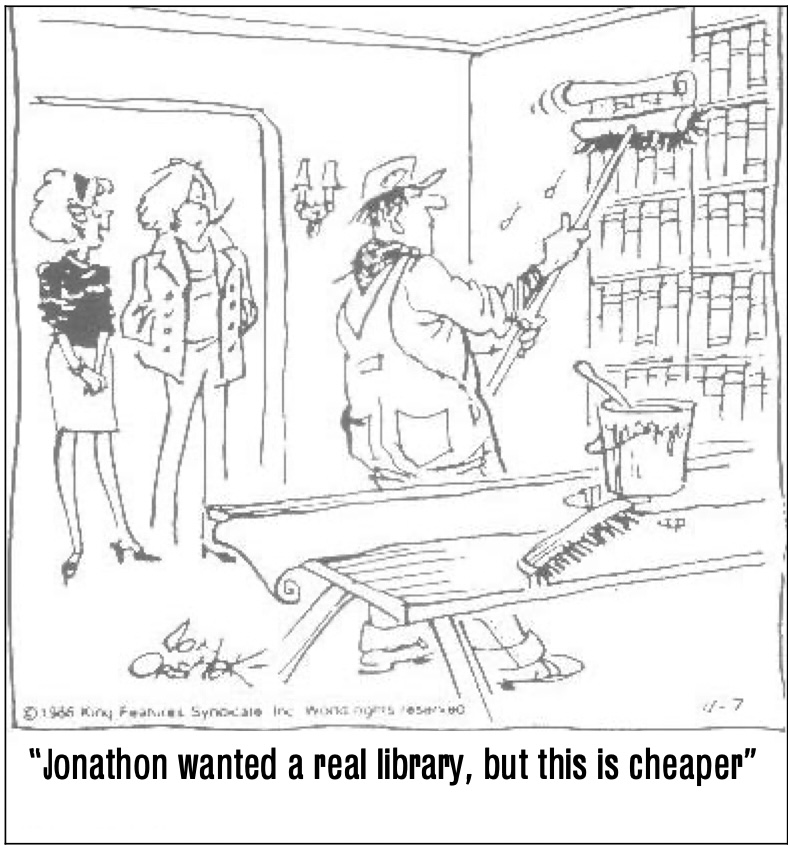
By 1989, state finances were getting tight across the entire country. But none was in a worse condition than Tasmania which had always been a mendicant state, even in the best of times.
I had been invited to speak to the Tasmanian Municipal Government in May on the subject of priority setting on which I had spoken to the Infrastructure Forum the previous year. But that earlier paper was aimed at giving a message to the AFCC, my arch nemesis at the time for their interest – and more especially, their ability – to be funded for infrastructure without any obvious concern for community benefit. I could see that local government required a different story.
In Hobart that morning, the session had been completely concerned with road funding, which they decided could be solved only if the Commonwealth Government would give them more money. I said that while we could fix some problems with more money, we didn’t have enough to fix all problems that way. In those days, I was younger and braver and I told them that they needed to reckon with the fact that there was no more money money coming, that indeed, whatever money the Commonwealth had to give would be reached by those ‘with longer arms than theirs’. Their experience meant they did not doubt me. But, I said, there was an answer: they could spend what they had more wisely. I then explained what they could achieve with asset management.
Happily the paper was well received. I was even asked to give the same paper to the engineers’ conference the following day. And then, about a month or so later, I had an invitation from the Minister of Construction, Resources and Energy, who had been sent a copy of my paper. He could see the value of AM and asked me if I would ‘come down to Tasmania and help him run the show’ . Chapter 12 “Moving on – my story” tells of this incredible opportunity and part 4 of our continuing story will look at how it worked in Tasmania.
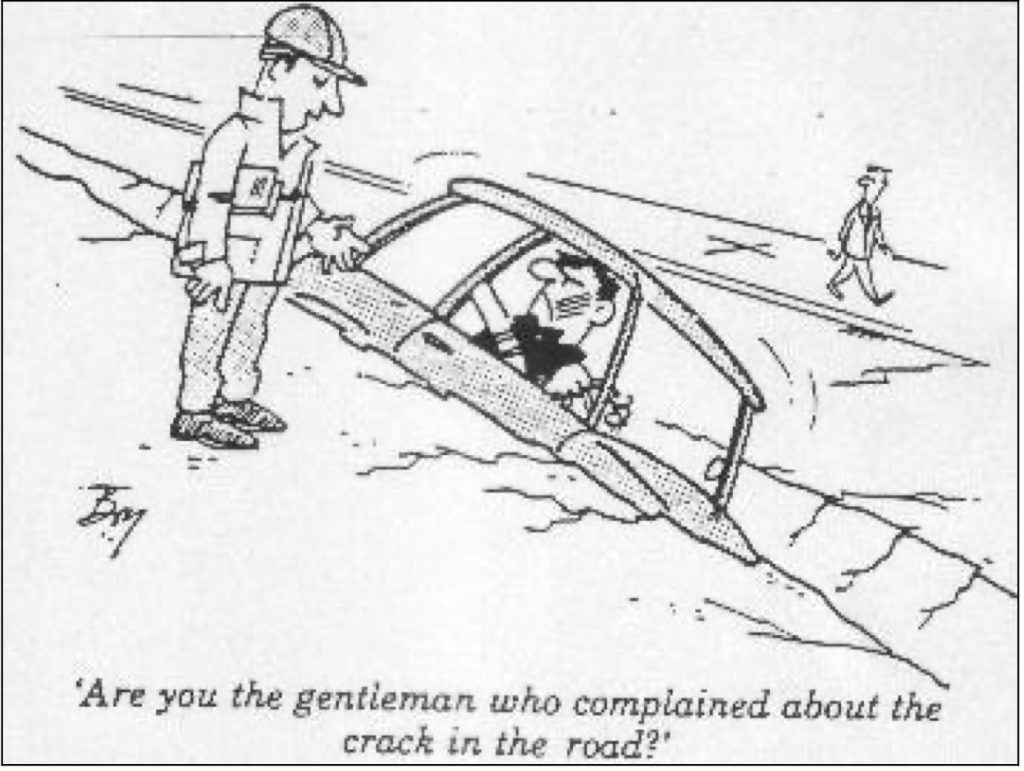
After the Construction Minister’s Conference in 1987 where the PAC work had been presented, I was greeted by my CEO. He was well pleased with our contribution.
Not that the PAC’s work on renewing infrastructure was necessarily understood! “I’m the envy of all”, he said, “because at last we have someone who can tell us how much we should be spending on maintenance”. Intrigued, I asked who this was. “Why, you!” he replied happily. I tried to explain that my expertise was in capital component renewal, not in maintenance, but my protestations were considered modesty and did not diminish his happiness, or belief!
It was generally assumed by maintenance personnel (although not by anyone else) that maintenance should be 2%. (Of what was never well specified). Now it so happened that the PAC calculations of component renewal had averaged out, across all portfolios, to be approximately 2% of the replacement capital value. This was taken as validation of this popular maintenance figure. It was a misinterpretation, but I could see how it arose.
Chapter 11, “Reactions” of The Asset Management Quest (volume 1 of The Asset Management Story) which I have posted today looks at the many and varied ideas that people had about asset management at the beginning.
What are the mistaken ideas that you have to deal with now?
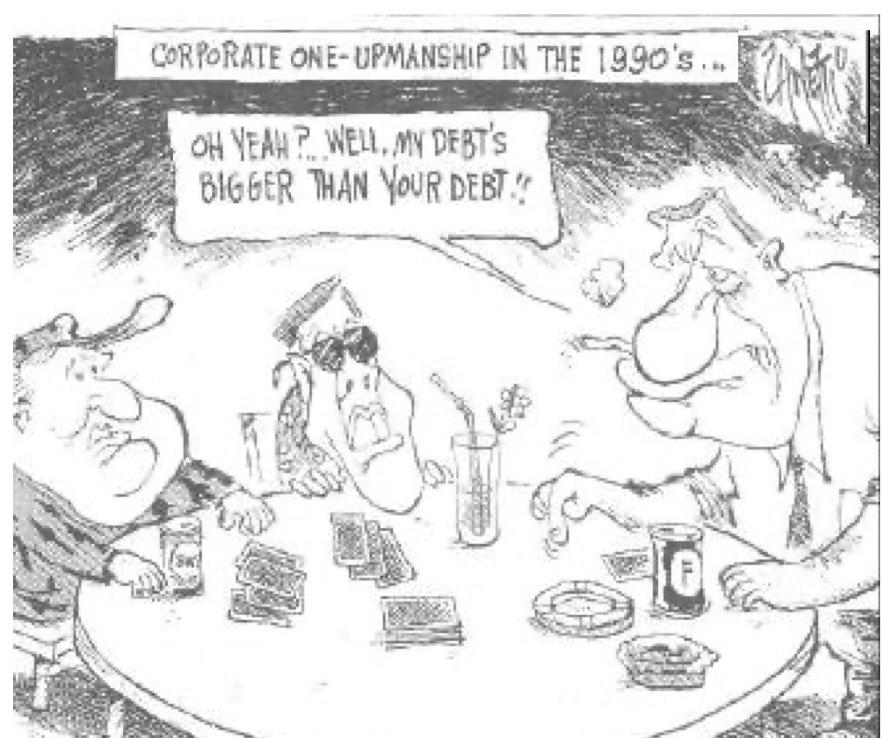
The late 1980s saw a reduction of grant monies to the States from the Commonwealth with promises of further cuts to come. Peak construction funding was over. This concerned the large private sector firms that had arisen with Commonwealth patronage and they now cast their eye over public works. It is no coincidence that the ‘outsourcing’ movement that had started overseas, should now arrive in Australia. Private Sector think tanks began to speak adversely about government construction performance, whilst at the same time boosting their own chances by promoting the country’s need for more. This was when the word ‘infrastructure’ started to be heard. The Australian Federation of Construction Contractors (AFCC) funded annual ‘Infrastructure Forums’ held in Canberra (near the source of power) and claimed that there was an infrastructure gap.
I challenged this in my first presentation to the Infrastructure Forum in 1988 and said that, since we didn’t know what we had, and we didn’t know what we needed (both of which were indisputably true) we couldn’t know whether we had a gap or not. This annoyed the AFCC and they asked the CSIRO, who organised the forums for them and who had arranged my first presentation, not to invite me again. So they didn’t. But they did arrange for the NCRB (the National Committee on Rational Building) – and a group that the CSIRO was heavily involved in – to be invited and the NCRB asked me to speak on their behalf. So my next address focused on the expensive consequences for the recurrent budget in future years of increasing capital spend this year. They didn’t like this either.
I didn’t have the power that the AFCC had – and, unfortunately, neither did the public works departments around the country. Gradually work was ‘outsourced’ to the private sector and it became obvious that if Asset Management were to grow, it needed to reach out beyond the engineering and corporate planning base that had guided it in its early stages.
That is what I look at in Chapter 10 of our ongoing Asset Management Story, “Architecture, Audit and the Rise of Accounting”, posted today.
Which disciplines, groups, organisations and institutions do we NOW need to reach?
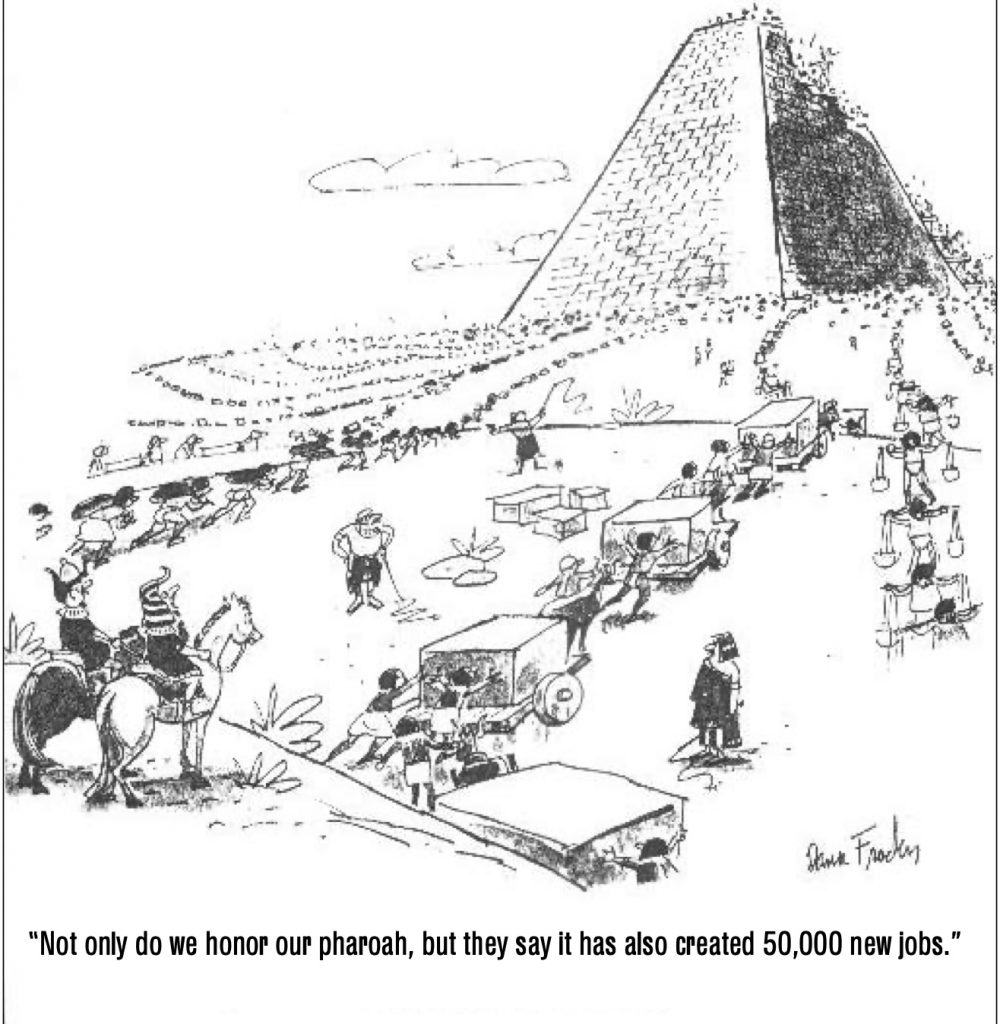
In the late 1950s, peaking in the mid 1960s, there was a great need for infrastructure as our population was growing rapidly. This was a time of full employment. We are again looking to infrastructure to get us out of the downturn that Covid has caused. But is it the ‘right’ solution now?
A little bit of history, 1950 – 1985
With its large land mass and tiny population, Australia had long feared invasion from their crowded northern neighbour, Indonesia. So, after the war it took advantage of the opportunity to build its population by encouraging both refugees and migrants. In addition to the overseas influx, the 1950s also saw the beginnings of the baby boom. Australia’s population rose extremely rapidly in a very short space of time and quickly outstripped growth in housing. At the time, two and even three families might have to share a house.
The private sector could not move fast enough so the Commonwealth took up the challenge.At the time, it was flush with funds for with women now entering the workforce in large numbers, tax revenues were greatly increasing, and with the need for social welfare very low, it could afford to spend – and it did. It created large rental housing estates, hundreds of new suburbs, all with supporting infrastructure in water, electricity, roads, etc. And so, for over 30 years, an entire generation, we experienced rapid construction growth, we didn’t know anything else.
More history, 1985 –
But by 1985, things were changing. Population growth was slowing. The Federal Government was no longer flush with funds. It was time for construction to slow down. The large expansion of infrastructure in the past thirty and more years was also presenting demands of its own. Logically we needed to consider switching our attention from growth to maintenance and over the next ten years this was to become even clearer.
But there was resistance, and it came from three sectors – industry, where the large construction companies built up during the building boom did not wish to see demand for their services reduced; politicians, who saw growth in State GDP and constant infrastructure announcements as proof of their ability to serve the people; and the construction professionals themselves, whose numbers greatly exceeded the fledgling asset management professionals.
With the change in history, came a change in justification for construction
With population increase slowing, and so much infrastructure now completed, we could no longer justify major construction by reference to urgent need – so we changed the justification. It was now argued that infrastructure ‘created’ employment. Many still believe that this is so. But actually, it is public spending that creates jobs – no matter where it is spent, on infrastructure – or on services.
We are also now rethinking ‘the goal’ for infrastructure.
What do you think the goal for infrastructure should now be?

Back in 1987, when the issue of renewing ageing infrastructure was first recognised as important enough by the South Australian Parliament for Asset Management to have its own Cabinet Sub-Committee, there was a lot of enthusiasm amongst the utilities and infrastructure agencies involved. However, with an eye on their budgets, each agency emphasized the immediate need for funds and, to avoid commitment, also emphasized the long term nature of asset management outcomes. The message that came across was that they needed to invest a lot of money now for unknown (but assuredly great!) benefits at some unspecified later date.
I felt that this was very much like saying “I am going to punch you in the stomach now and it will greatly hurt, but when the pain subsides (and I don’t know when that will be), I guarantee you will feel absolutely ecstatic!”
I could not see how this could possibly be a winning strategy, and of course it wasn’t. It was, however, the message that almost all infrastructure agencies across the country were to give in those early years. With pretty much the same results. I had suggested we frame our approach around the changed management and governance requirements that all were now facing but my agency colleagues said this was too difficult. They were right, it was. Yet somehow that is what we needed to do. Actually, what they meant was that it would take too long! They wanted to get their demands in straight away.
Chapter 9 of our Asset Management Story, uploaded today, looks at the early implementation of asset management in the late 1980s.
What has now changed? How have we moved on? Is ‘selling’ asset management any easier, or more successful? Why?

Or managed luck? I have not hidden the fact that an enormous amount of luck has blessed my work in asset management since the very beginning. But is it blind luck, ( just sheer good fortune)? Or did I somehow manage some of it, simply by being dedicated to making things work and being prepared to take advantage of any opportunities that presented themselves?
I have never been inclined to differentiate, just grateful for it all. However perhaps we should consider this for we all have luck (good and bad) and, while we know that we must take responsibility when things don’t work out so well, we are often far too modest about doing the same when things go well. But, surely, recognising what we did ‘right’ as well as what we did ‘wrong’ is equally important for progress?
Today I have posted Chapter 8 about the fortuitous events that made it possible to transit from a research position with the Parliamentary Public Accounts Committee to a position where I could try implementing some of the ideas we had learnt. All 8 chapters are now available.
Now, looking back over your own successes, why not think about why they happened.
And while you are at it, why not tell everybody in the comments below.
It would cheer us up. And we really need to have some good news now.
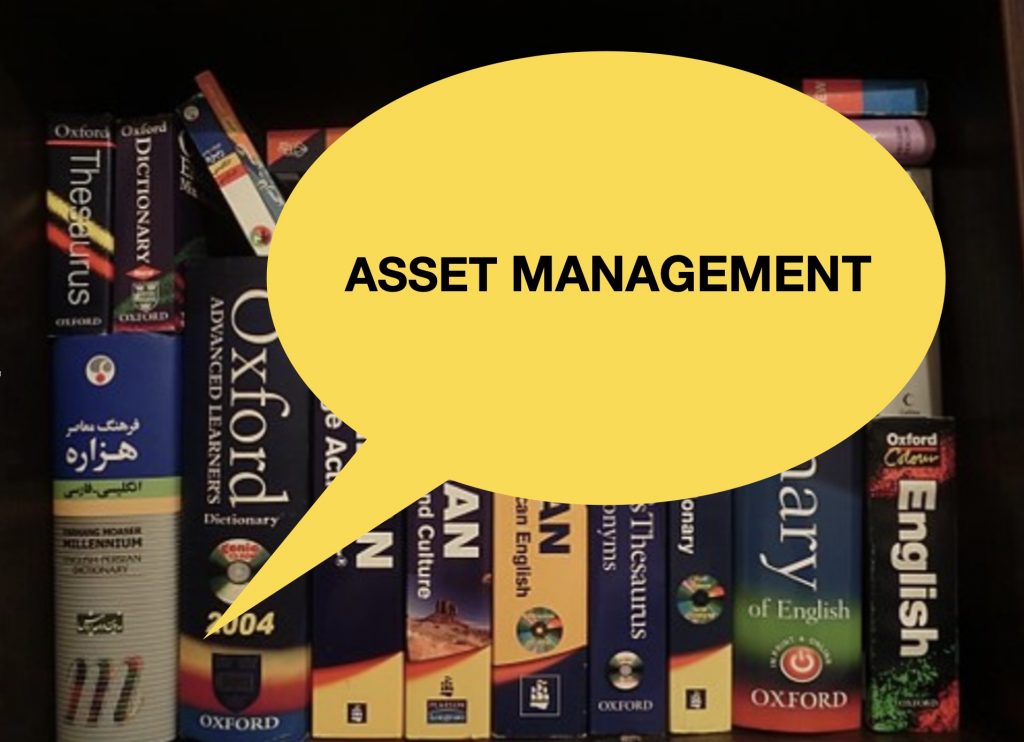
The continuing story of Asset Management. It is 1987 and reactions to AM information are mixed.
There was the horror of a board member of the Adelaide Hospital who, when he saw the extent of their future renewal costs, declared “My Goodness, we cannot let the board see this!” A too common response amongst those responsible for management, unfortunately.
But the Under-Treasurer was thrilled when the credit rating agencies saw the asset replacement values as indicative of the State’s wealth (ignoring our future renewal costs), and so we were able to keep our AAA rating.
In Chapter Seven of our Asset Management Story, “Reactions”, I look at the initial impact of the work of the Public Accounts Committee.
There must have been something in the ether in the mid 1980s for, almost simultaneously, major reports on future infrastructure costs were released in the UK, the USA and Australia. But Australia was the only one to focus on managing the costs.
In the UK the focus was on advising the Government of the size and costs of future infrastructure growth. In the USA, the ‘Fragile Foundations’ study included renewal, expansion and upgrade but with insufficient detail to enable these elements to be disentangled.
The aim [of the American study] was to make the figure as large as possible to convince politicians to take the matter seriously. (Later I was to meet with one of the authors of this report, an MP, and when I talked about how we might improve infrastructure decision making, she reacted negatively “If we can’t get the capital projects we want, it wouldn’t be worth going into politics!”)
Earlier I had observed that many in Australia thought that America would surely have discovered and dealt with the asset management problem ahead of us. Well, they certainly had discovered the problem. But they hadn’t dealt with it. And the reason for this is, I think, quite interesting.
America, as a rich country, was used to dealing with problems by throwing money at them, so their focus on the costs alone probably made sense. Australia, on the other hand, had no such illusions. We didn’t expect money to be easily forthcoming and knew that we would need to present a well documented case if this were to happen. We also knew priorities would need to be set. So our focus on management was understandable.
To see more, Chapter 7 has been uploaded today and Chapters 1-7 are now available at
https://talkinginfrastructure.com/the-asset-management-story/

To coincide with our presentation on the Waves of Asset Management at the IAM Global Conference on June 15, Talking Infrastructure launches: TIki. The wiki for strategic Asset Managers.
To being with, while we build up the content, it’s read-only, but we invite you to join in with further development.
Organized by Wave, we aim to build up an unrivalled knowledge base on Strategic Asset Management, including access to the best of… Strategic Asset Management, Penny’s biweekly newsletter from 1999 to 2014, as well as more on Building an Asset Management Team, and through DAN and other networking with AM leads in North America and beyond. And don’t miss an episode of The Story of Asset Management, which for Penny was always about being strategic.
On Wave 3, Infrastructure Decision Making, we are using TIki to capture thinking on future friendly assets – better questions, some of them hard, particularly in this era of ‘Build Back Better’ trillions.
For Wave 4, we aim to start to nibble away at how to integrate infrastructure and planetary health, starting with the initiatives at Blue Mountains City Council.
TIki already has many pages, and many more to come. It’s easy to follow your curiosity, as well as backtrack via the trace.
Click on TIki in the top menu bar, and start your exploration now!
“Have you looked at what the UK and the USA are doing?” Whenever I talked with others about our work in asset management during those early years with the Public Accounts Committee, 1985-1987, this question would commonly be voiced, generally in the tone of ‘Surely others have already done this’. But they hadn’t. One of the hardest tasks was overcoming this Australian cultural cringe. We simply couldn’t conceive of ourselves being in the lead in anything – except Sport. And yet, when it comes to asset management we have led the world. Both the UK and the USA learnt from us! How did this come about?
Nevertheless, New York was very helpful when it came to getting our message across. It became an object lesson for what might befall us if we did not get our heads around Asset Management. How come?
The answers – and many interesting New York stories – can be found in Chapter 6 of our continuing story of the development of asset management: ‘How to contain costs, asset management proper begins’.
Chapters 1-6 of our story are now available
In earlier chapters we looked at how asset management had developed from an observation that we didn’t know what it cost us to supply irrigators with water, to the more serious question that we didn’t know what it cost to supply all South Australian residents with any of their water and sewer services. In the effort to fill this information gap we made the happy discovery that our approach could not only determine what the current cost was but it would also allow us to estimate the likely future cost – and the timing – of asset renewal. We were on a roll!
Our work spread rapidly to other water authorities in the country, and shortly after, overseas. It also came to the attention of the Parliament and to their standing sub-committee, the Public Accounts Committee. In Chapter 5 we take a detailed look at what it took to expand our work to all the major state infrastructure agencies in South Australia – starting with the State Housing Commission, and moving on to water and energy, highways, hospitals, transport, and schools and colleges. So read on with Chapter 5 – Asset Management Widens its Scope.
And if you haven’t yet read Chapters 1-4, you will find links to them here in our last blog post.

Recent Comments